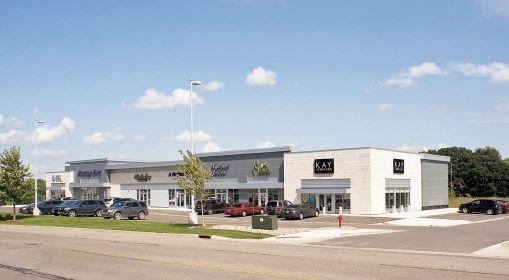
2 minute read
Mixing Retail and Residential
Businesses and residences once lived in their own separate locations, but the younger generation seeks neighborhoods with all the services and amenities
BY KAYLA PRASEK
As the younger generation grows its families and establishes itself in residential neighborhoods, cities like Sioux Falls, South Dakota, are seeing a shift in what those families demand of a residential development. Where there used to be a distinct split between residential neighborhoods and retail districts, Raquel Blount, vice president of commercial real estate at Lloyd Cos., says the past two to three years have seen more integration.
“The younger generation wants to be able to live, work and play in the same neighborhood,” Blount says, and they don’t necessarily want to be in a city’s downtown. “They want those services in their residential neighborhoods.”
Two developments Lloyd Cos. has been working on for several years started as retail, but as both developments have become established parts of Sioux Falls, Lloyd and other developers have seen an increased interest in housing in the developments, creating mini communities within the city.
Dawley Farm Village is a 300-acre development anchored by Walmart and Target and a project Lloyd has been involved with since the beginning. “Walmart was the first sale from the Dawley Family Farm, and then Target wanted to be involved and that was the impetus to bring others,” Blount says.
With almost 20 existing businesses, development at Dawley Farm Village hasn’t slowed down, as a coffee shop, Petsmart and a credit union are all preparing to open. Lloyd is also working with a restaurant group for the development, and several housing projects are in the works as well. “We’re really creating that village component,” Blount says.
Lloyd Cos. is also working on the Dakota Crossing development in south Sioux Falls, which started three years ago with another Walmart. “Since that opening, we have closed on six outlots and are going to close on three acres of land adjacent to the development.”


Several strip malls have opened as well, providing more services to future housing projects in the development. An arterial road goes through the development and feeds into smaller surrounding communities, and Blount expects the development to become a regional shopping center. “Three years ago, this was all ag land, and now we have 90 acres in development,” Blount says.
A Growing Trend
The city of Grand Forks saw its south end develop in a similar way to what’s happening now in Sioux Falls.
The first development was a high school, but once the mall and Target were built, commercial development followed, says Keith Lund, vice president of the Grand Forks Region Economic Development Corp. The commercial development preceded the residential development, but those neighborhoods were built as people decided they wanted to live closer to services they need, Lund says.
“When these types of developments are done correctly, you can have all the services within walking distance of your home,” Lund says. “They can be like mini versions of downtown, away from downtown.”

Lund says there has also been a trend of housing being built near workplaces. “They’re a more intentional, self-contained, mixed-use development that helps make the move to a new city more attractive. It creates a sense of vibrancy.”
While the Grand Forks EDC hasn’t pushed this type of development, as its current focus is on the city’s downtown, Lund says there is more opportunity for new developments to have these features and the city’s current zoning supports it.
In Bismarck, North Dakota, the city hasn’t seen this type of development thus far, aside from the occasional mixed-use building, but there is the potential for it. Brian Ritter, president and CEO of the Bismarck-Mandan


Development Association, says he continues to see “a very high level of interest in restaurant and retail.” Hay Creek Shops is a commercial development in a growing part of the city that could someday see housing develop around it. At the same time, Ritter says building permits and home sales are up in the city, but as more businesses open in Bismarck, he expects to see more housing developments come to fruition as well.
Kayla Prasek STAFF WRITER, PRAIRIE BUSINESS
701.780.1187
KPRASEK@PRAIRIEBUSINESSMAGAZINE.COM










